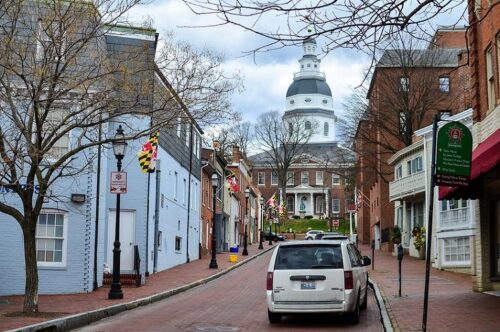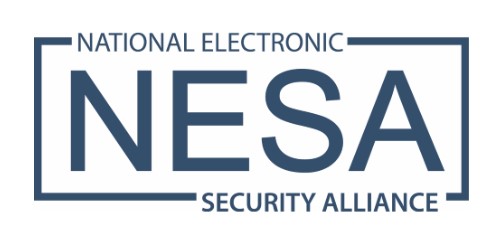
3.1.23 – Greater Greater Washington
This Maryland General Assembly session has the potential to be the most impactful one in over a decade. This year’s legislative session, already halfway done, has brought 40 new Delegates, ten new Senators, five new committee chairs, and even a new (or at least newly renamed) Senate committee.
Arguably the biggest change is the election of Wes Moore as Governor of Maryland. This is the one with the biggest implication for the ability of the Democratic supermajorities of the Maryland General Assembly to tackle longstanding issues of transportation, housing, and the environment.
After eight years of urbanist bills having to pass by veto-proof margins (which often meant waiting until the next year to get overridden into law) and urbanist priorities getting relatively short shrift in the state budget, Maryland could pass a lot of those priorities into law.
Here are some of the top transportation, housing, and land use issues and bills to look out for as the 2023 Maryland legislative session enters its second half.

New structures, new funding?
If there’s one theme many of this year’s big transit bills have in common, it’s that they each try and find new ways of organizing or funding Maryland’s transportation systems and the backlog of maintenance and projects they’ve been accumulating over the past 8 years. Several pieces of legislation which fall into this category:
- The Maryland Rail Investment Act, or HB (House Bill) 74 from new House Majority Leader Marc Korman (D-Montgomery) and its crossfile (when a bill gets an identical companion version in the other chamber to better ensure its chances of passage) SB (Senate Bill) 412 from Sen.Jim Rosapepe (D-Anne Arundel and Prince George’s), would create a Maryland Rail Authority to help finance, build, and even maintain and operate the state’s rail projects and facilities, from expanding MARC Commuter rail into Northern Virginia, Delaware, and Western Maryland to improving the existing MARC network to new(ly revived projects like Baltimore’s Red Line and Charles and Prince George’s County’s Southern Maryland Rapid Transit System using extra funds from the state’s toll road agency, the Maryland Transportation Authority.
- The State and Federal Transportation Funding Act, or HB 51, also from Korman, and SB 24 from Sen. Cory McCray (D-Baltimore City), would allow the Maryland Department of Transportation (MDOT) to issue “GARVEE” (Grant Anticipation Revenue Vehicle) bonds backed by future federal aid, a tool MDOT last used to help finance the Intercounty Connector, for a range of large-scale transit projects, including many of the same projects as the Maryland Rail Investment Act but also replacing the Susquehanna River Rail Bridge and B&P Tunnel used by Amtrak and MARC and even electric bus procurement.
- HB 491/SB 465 from Del. Tony Bridges (D-Baltimore City) and Sen. Mary Washington (D-Baltimore City and Baltimore County), which follows up on the recommendations of the Baltimore Metropolitan Council by establishing a “Commission to Study Establishing a Baltimore Regional Transit Authority”. (One of the secrets of Annapolis is that the General Assembly loves task forces and commissions to study doing pretty much everything under the sun, but a good chunk of them actually do help achieve their goal. In this case that’s to figure out what a regional transit authority for Baltimore would actually look like and how it might be funded.)
- HB 794/SB 876, also from Bridges and Washington, to create a “Baltimore Transit Commission” exercising more direct oversight over the local rail and bus portfolios of the MTA (including Light RailLink, Metro Subwaylink, and core local bus service) and its budgets and plans for the Baltimore region, regardless of whether or not it adopts a regional transit authority or what that looks like if it does.

All about equity
Most of the rest of the big transportation bills this session can be classified as focusing on equity. For example,
- The “Equitable and Inclusive Transit-Oriented Development Enhancement Act”, or HB 12/SB 151 from the House’s new Majority Whip, Jazz Lewis and the Senate’s new President Pro Tem, Malcolm Augustine (Both D-Prince George’s) tries, for the second straight year, to set up a capital grant and revolving loan fund to boost transit-oriented development.
- HB 9/SB 19 from Del. Sheila Ruth (D-Baltimore County) and Sen. Jill Carter (D-Baltimore City) would require MDOT to explicitly take equity into consideration and conduct equity analyses when developing transportation plans and goals, a sweeping mandate with the potential to affect everything from the cancellation of the Red Line (or at least any future occurrences like that disaster) to the Central Maryland Regional Transportation Plan and even the triannual MTA bus route changes.
- The Safe Access For All Roads Act of 2023, or HB 70/SB 16 from Del. Lorig Charkoudian and Sen. Jeff Waldstreicher (Both D-Montgomery) would require MDOT and the State Highway Administration to recommend and implement design elements for pedestrian and bike safety like crosswalks, at least where feasible, on as many of its construction and road improvement projects as possible.
- HB 1008 from Del. Robbyn Lewis (D-Baltimore City), which via a rebate program aims to do for e-bikes what the Inflation Reduction Act is set to do electric cars
- HB 673 and SB 617 or the Fair Fares Act, from Del. Mark Edelson (D-Baltimore City) and Sen. Shelly Hettleman (D-Baltimore County), which would, among other things, decouple MTA fares from inflation, almost certainly preventing yet another price hike this summer.
- HB 819 from the Montgomery and Prince George’s County Delegations, prohibiting the first jurisdiction’s County Council from passing or enforcing any laws requiring new off-street parking for any residential development within a quarter mile of any Metrorail or Purple Line station, past or present.
_799_495_90.jpg)
Housing and the Environment
Some of the standouts here
- HB 60/SB 315, or the Housing Innovation Pilot Program Act of 2023 from Del. Vaughn Stewart (D-Montgomery) and Waldstreicher, Stewart’s latest attempt to spread the gospel of social housing.
- HB 239/SB 382 from Del. Jeffrie Long Jr. (D-Calvert and Prince George’s) and Sen. Mary Washington, a task force bill looking at the possibility of expanding accessory dwelling units throughout Maryland
- HB 150/SB 166 from Stewart and Waldstreicher, which would ensure that Maryland Department of Housing and Community Development funds can be used for adaptive reuse.
- SB 819 from Sen. Alonzo Washington (D-Prince George’s), creating a right of first refusal program for the state’s apartment residents, as well as a $30 million fund specifically for counties with a “high affordable housing deficit” (ie at least 10,000 units)
- The Reclaim Renewable Energy Act of 2023, or HB 718/SB 590 from Stewart and Sen. Karen Lewis Young (D-Frederick), a bill to exclude several dubious forms of “renewable energy” from continuing to be subsidized in the state’s Renewable Energy Portfolio Standard, most notably trash incinerators.
- HB 352/SB 915 from Del. Dana Stein (D-Baltimore County) and Sen. Arthur Ellis (D-Charles), a spectacularly well-timed bill to require freight rail companies to use at least 2 crewmembers when transporting freight through the same rail corridors as passenger/commuter rail, aka one of the major reforms currently being called for nationally in the wake of the Norfolk Southern crisis in East Palestine, Ohio.
It all comes down to the budget
Arguably the biggest bill, is HB 200/SB 181, this fiscal year’s budget bill. The staffing issues at MDOT, money for helping to revive Baltimore’s Red Line and tear down its infamous Highway to Nowhere, the continuing construction of the Purple Line, beginning to help address WMATA’s financial issues, a good portion of the funding mandates for all the other bills mentioned here, all of it falls under this massive behemoth of a bill (199 pages, and that’s before several dozen amendments get tacked on in committee and on the House and Senate floors).
Not only does the change in Governors spell massive changes for what goes into this year’s budget, so does a newly effective constitutional amendment approved by voters in 2020 allowing the General Assembly to increase, add to, or reduce parts of the budget.
Maryland governance has shifted greatly overnight. In a few weeks, we will see the earliest instances of how much that change will affect issues we care about the most.
Alex Holt is a New York state native, Maryland transplant, and freelance writer. He lives in Mt. Washington in Baltimore and enjoys geeking out about all things transit, sports, politics, and comics, not necessarily in that order. He was formerly GGWash’s Maryland Correspondent.
